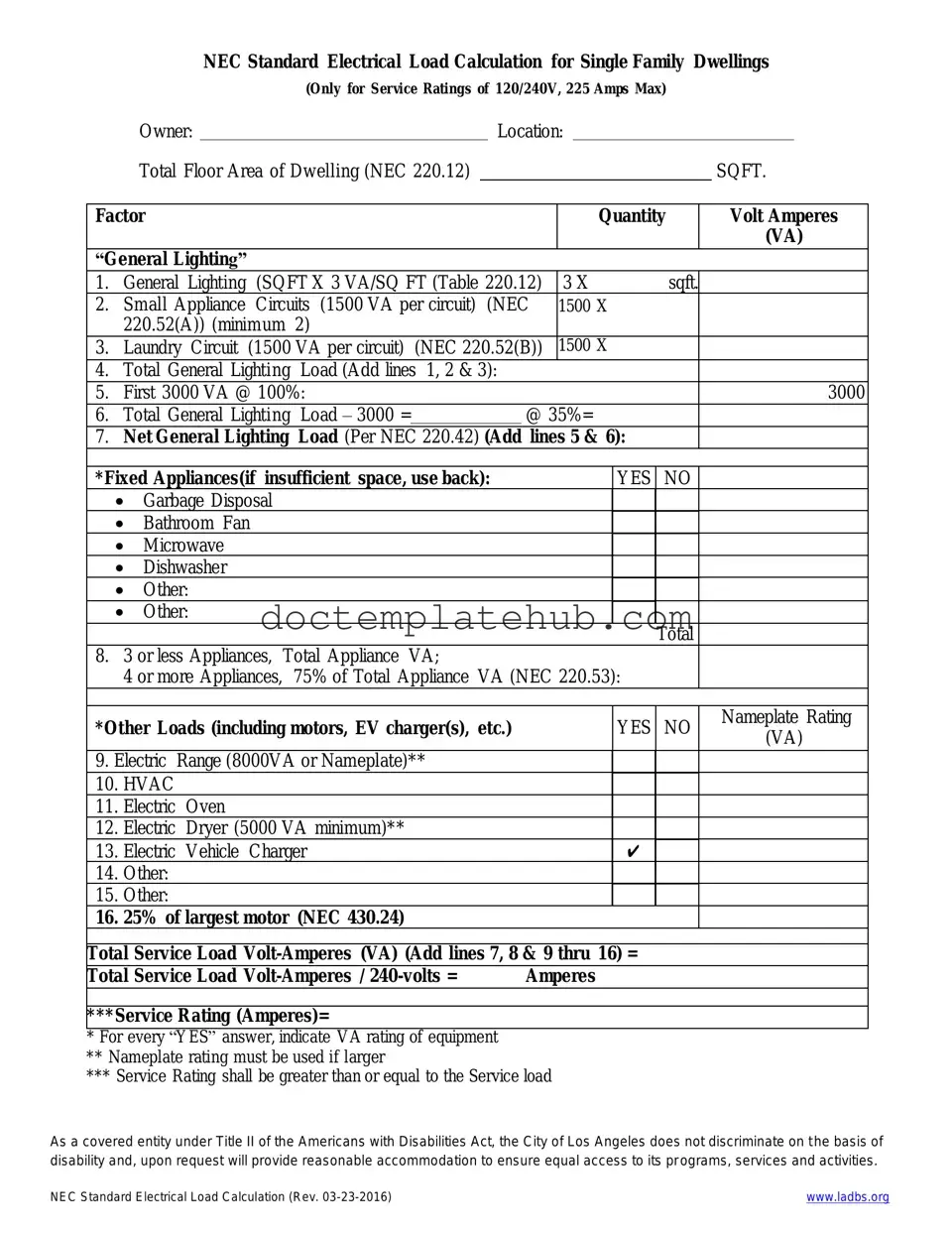What is the LADBS NEC Standard Electrical Load Calculation form?
The LADBS NEC Standard Electrical Load Calculation form is a document used to determine the electrical load requirements for residential and commercial buildings in Los Angeles. This form helps ensure that the electrical system is designed to safely accommodate the anticipated load, in compliance with the National Electrical Code (NEC) and local regulations.
Who needs to fill out this form?
This form must be completed by licensed electricians, electrical engineers, or contractors involved in the design or installation of electrical systems. It is essential for anyone applying for electrical permits in Los Angeles to provide an accurate load calculation.
What information is required on the form?
The form requires detailed information about the building's electrical systems, including the types of appliances, lighting fixtures, and other electrical loads. It also asks for specifics about the service entrance, feeder circuits, and any special equipment that may affect the overall load calculation.
How is the electrical load calculated?
Calculating the electrical load involves adding up the wattage of all devices that will be connected to the electrical system. The form includes guidelines for determining the demand factors for various types of loads, which helps in estimating the total load more accurately.
What are the consequences of not submitting this form?
Failure to submit the LADBS NEC Standard Electrical Load Calculation form can result in delays in obtaining necessary permits. Additionally, it may lead to issues with the safety and functionality of the electrical system, potentially causing non-compliance with local codes and regulations.
Is there a deadline for submitting the form?
While there is no specific deadline for submitting the form, it should be completed and submitted as part of the permit application process. Delays in submission can prolong the permitting process and impact project timelines.
Can I fill out the form online?
Yes, the LADBS provides an online platform where applicants can fill out and submit the NEC Standard Electrical Load Calculation form. This digital option streamlines the process and allows for easier tracking of submissions.
Are there any fees associated with the submission of this form?
Typically, there are fees related to the permit application process, which may include costs for the review of the electrical load calculation. It is advisable to check with the LADBS for the most current fee schedule.
What should I do if I make a mistake on the form?
If an error is discovered after submission, it is crucial to contact the LADBS as soon as possible. They will provide guidance on how to correct the mistake and resubmit the form if necessary. Prompt communication can help avoid complications with the permit process.
Where can I find additional resources or assistance?
For additional resources, applicants can visit the LADBS website, which offers guidelines, FAQs, and contact information for support. Additionally, local electrical professionals can provide assistance in completing the form accurately.
